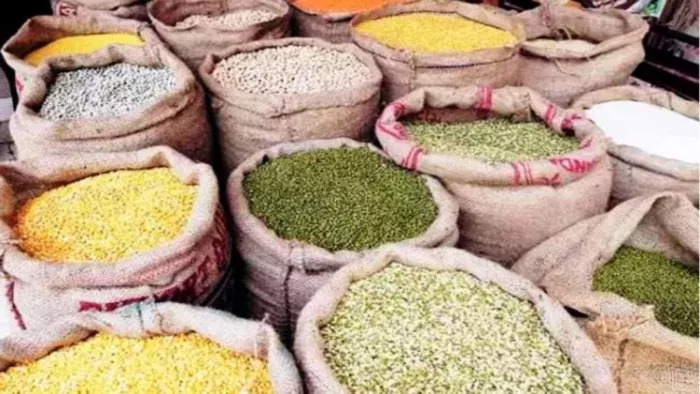
New Delhi: India is self-sufficient in terms of food grains. Many types of grains are exported, but due to the huge shortage of pulses, 25 to 30 lakh tons of pulses have to be imported every year. This is the reason why a target has been set to become self-sufficient in terms of pulses in the next three years. For this, there is an emphasis on increasing the production, storage and marketing of pulses.
The initial report of farming has raised enthusiasm. This time, so far, there is an increase of nine lakh hectares in the area of pigeon pea and moong. With the production of paddy, farmers have started moving towards pulses.
Changing farming pattern
It is believed that the increase in the minimum support price (MSP) of pulses crops and the guarantee of 100% purchase have encouraged farmers to change their farming pattern. Due to this, the focus on pigeon pea and moong has increased. The report of the Ministry of Agriculture and Farmers Welfare shows that pulses have been sown in 125.13 lakh hectares so far this year as compared to 116.66 lakh hectares last year. This figure is expected to increase further. The demand is highest for pigeon pea dal. Due to this, its acreage has increased the most.
So far, sowing has been done in 45.78 lakh hectares, which is 5.04 lakh hectares more than last year. There is also an increase of four lakh hectares in the area of moong. So far, sowing has been done in 34.74 lakh hectares.
Every year 50 lakh tonnes of pigeon pea is required
The country needs about 50 lakh tons of tur dal every year, while the production is 30 to 35 lakh tons. This is the reason why the prices of tur dal are continuously increasing. Despite the expectation of good production of tur and moong, the target of becoming self-sufficient in pulses by 2027 is a big challenge. Therefore, systematic work is being done. There are preparations to release the advance estimate of pulse crops next month. There is an effort to overcome the pulse crisis in two ways. At present, the acreage is being increased for a permanent solution by keeping the option of import open. On Friday, for the first time, the government consulted with the stakeholders related to pulses and took their opinion on the quantity of production, storage and import.
Huge shortage of demand and supply
Due to decrease in production and increase in demand, the quantity of pulses imported is increasing every year. In 2023, 29.9 lakh tonnes of pulses had to be imported from other countries. A year ago this quantity was 20.7 lakh tonnes. So far this year, 14.0 lakh tonnes of pulses have been imported. Pulse production is continuously falling. From 273 lakh tonnes in 2022, the production of pulses has come down to 260 lakh tonnes in 2023 and only 245 lakh tonnes in 2024.
--Advertisement--

 Priya
Priya Share
Share



